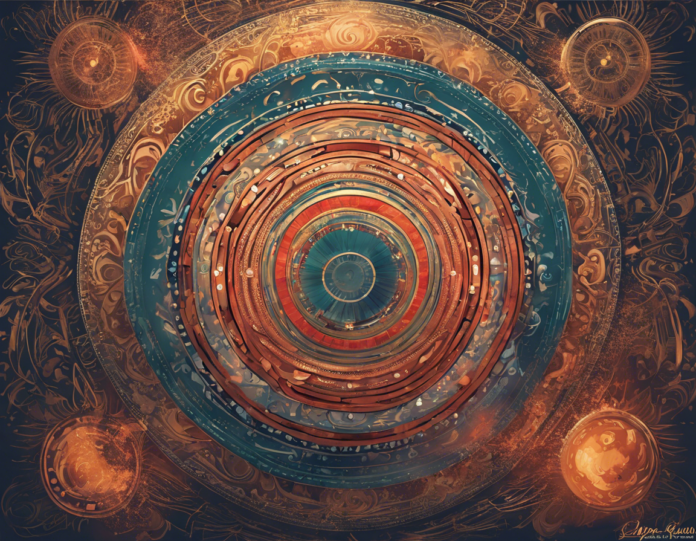Introduction
A Surya Grahan, also known as a solar eclipse, occurs when the Moon passes between the Sun and the Earth, blocking all or part of the Sun's rays from reaching the Earth. This astronomical event is an awe-inspiring sight, often captivating people's attention and curiosity. Understanding the timing of a Surya Grahan is crucial for those eager to witness this phenomenon and for enthusiasts interested in studying celestial events. In this article, we will delve into the important details about the timing of Surya Grahans, including the different types of solar eclipses, how to safely observe them, and significant upcoming events.
Types of Surya Grahans
There are three primary types of solar eclipses:
1. Total Surya Grahan: In a total solar eclipse, the Sun is completely obscured by the Moon, casting a shadow on Earth. This is a rare and remarkable event that occurs when the Moon's apparent diameter is larger than the Sun's.
2. Partial Surya Grahan: A partial solar eclipse happens when only a portion of the Sun is obscured by the Moon. This results in a crescent-shaped Sun during the peak of the eclipse.
3. Annular Surya Grahan: An annular solar eclipse occurs when the Moon is farthest from the Earth, causing it to appear smaller than the Sun. This creates a "ring of fire" effect in the sky, with the Sun's outer edges still visible around the dark silhouette of the Moon.
Timing of a Surya Grahan
The timing of a Surya Grahan is crucial for planning observations and understanding the celestial phenomenon. Key aspects to consider include:
1. Contact Points: A solar eclipse has four primary contact points during its progression: first contact (when the Moon first touches the Sun's edge), second contact (when the Moon completely covers the Sun), third contact (when the Moon starts moving away from the Sun), and fourth contact (when the eclipse ends).
2. Duration: The duration of a solar eclipse varies depending on factors such as the type of eclipse and the observer's location. Total solar eclipses typically last for a few minutes at any given location, while partial eclipses can extend for a longer duration.
3. Path of Totality: The path of totality refers to the narrow track on Earth's surface where a total solar eclipse is visible. Observers within this path experience the complete obscuration of the Sun by the Moon, creating a surreal twilight effect.
4. Maximum Eclipse: The maximum eclipse occurs when the Moon covers the maximum portion of the Sun's disk, reaching the peak of the eclipse. This moment marks the climax of the celestial event and is often the most dramatic phase for observers.
Safety Precautions for Observing a Surya Grahan
While witnessing a Surya Grahan can be a captivating experience, it is essential to take precautions to protect your eyes and avoid eye damage. Here are some safety tips for observing a solar eclipse:
1. Wear Proper Eye Protection: Use solar viewing glasses or eclipse glasses that meet the ISO 12312-2 international safety standards. Regular sunglasses are not sufficient for viewing a solar eclipse.
2. Use Solar Filters: If you are using binoculars or a telescope to observe the eclipse, ensure that you have proper solar filters installed on the devices. Directly looking at the Sun through these optical instruments without filters can cause permanent eye damage.
3. Indirect Observation: You can also create a pinhole projector or use a solargraph to project an image of the eclipse onto a surface. This indirect method allows you to view the eclipse safely without looking directly at the Sun.
4. Monitor Children and Pets: Make sure that children and pets are also equipped with proper eye protection or are using indirect viewing methods to observe the eclipse. Supervise them closely to prevent accidental eye exposure to the Sun.
Significant Upcoming Surya Grahans
For avid skywatchers and astronomy enthusiasts, knowing about significant upcoming solar eclipses is essential for planning observations and travel. Here are some notable Surya Grahans scheduled to occur in the coming years:
1. Total Solar Eclipse on December 4, 2021: This total solar eclipse will be visible in parts of Antarctica, including the South Orkney Islands and the Weddell Sea region. It is expected to be a breathtaking event for those in the viewing path.
2. Partial Solar Eclipse on October 25, 2022: The partial solar eclipse on this date will be visible from North America, Europe, and northern Asia. Observers in these regions can witness a partial obscuration of the Sun by the Moon.
3. Annular Solar Eclipse on April 20, 2023: The annular solar eclipse in April 2023 will be visible in parts of Indonesia, Australia, and the Pacific Ocean. Skywatchers in these regions can experience the stunning "ring of fire" effect during the eclipse.
4. Total Solar Eclipse on August 12, 2026: One of the most anticipated solar eclipses, the total solar eclipse in August 2026 will be visible from parts of North America, including Mexico, the United States, and Canada. This event is expected to draw millions of viewers to the path of totality.
Frequently Asked Questions (FAQs)
Q1: Can I look at a solar eclipse without special eye protection?
A1: No, it is extremely dangerous to look directly at a solar eclipse without proper eye protection. The ultraviolet and infrared rays emitted by the Sun during an eclipse can cause severe eye damage or blindness.
Q2: How often do Surya Grahans occur?
A2: Solar eclipses are relatively rare events and do not happen every year at the same location. The frequency of solar eclipses depends on various factors, including the alignment of the Sun, Moon, and Earth.
Q3: What is the difference between a lunar eclipse and a solar eclipse?
A3: A lunar eclipse occurs when the Earth passes between the Sun and the Moon, casting a shadow on the Moon. In contrast, a solar eclipse happens when the Moon comes between the Sun and the Earth, blocking sunlight from reaching the Earth.
Q4: Is it safe to take photographs of a solar eclipse with a smartphone?
A4: It is unsafe to use a smartphone camera to directly photograph a solar eclipse without proper solar filters. The intense light from the Sun can damage the camera sensor and potentially harm your eyes if you look through the viewfinder.
Q5: How can I calculate the timing and duration of a solar eclipse for my location?
A5: Various online tools and apps, such as astronomical calculators and eclipse prediction software, can help you determine the precise timing, duration, and visibility of a solar eclipse based on your location.
Conclusion
Understanding the timing of a Surya Grahan is not only essential for witnessing this captivating celestial event but also for ensuring the safety of your eyes during observation. By familiarizing yourself with the types of solar eclipses, safety precautions, and upcoming events, you can enrich your experience as a skywatcher and appreciate the wonders of the cosmos. Stay informed, stay safe, and enjoy the celestial spectacle that is a solar eclipse.

